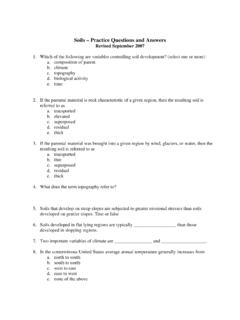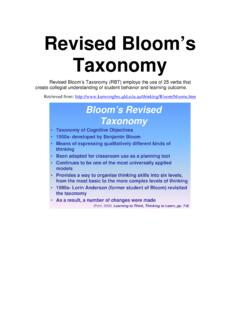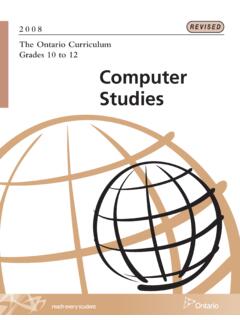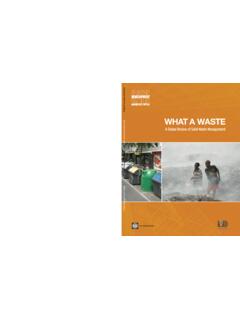Transcription of Revised Children’s Anxiety and Depression Scale
1 Revised children 's Anxiety and Depression Scale User's Guide Bruce F. Chorpita Chad Ebesutani Susan H. Spence July 1, 2015. ALL MATERIALS AVAILABLE ON THE UCLA CHILD FIRST SITE. 1. Table of Contents Background 3. Terms of Use 3. Support 3. Scoring 3. Languages and Versions 4. Summary 5. References 5. Appendix A: RCADS T-Score Conversion Tables Boy & Girls Grades 3&4 7. Boy & Girls Grades 5&6 8. Boy & Girls Grades 7&8 9. Boy & Girls Grades 9&10 10. Boy & Girls Grades 11&12 11. Appendix B: RCADS-P T-Score Conversion Tables Boy & Girls Grades 3&4 12. Boy & Girls Grades 5&6 13. Boy & Girls Grades 7&8 14.
2 Boy & Girls Grades 9&10 15. Boy & Girls Grades 11&12 16. Appendix C: RCADS T-Score Conversion Tables (Total Scores). Boy & Girls Grades 3-6 17. Boy & Girls Grades 7-10 20. Boy & Girls Grades 11-12 23. Appendix D: RCADS-P T-Score Conversion Tables (Total Scores). Boy & Girls Grades 3-6 26. Boy & Girls Grades 7-10 29. Boy & Girls Grades 11-12 32. Background The Revised Child Anxiety and Depression Scale (RCADS) is a 47-item, youth self-report questionnaire with subscales including: separation Anxiety disorder (SAD), social phobia (SP), generalized Anxiety disorder (GAD), panic disorder (PD), obsessive compulsive disorder (OCD), and major depressive disorder (MDD).
3 It also yields a Total Anxiety Scale (sum of the 5 Anxiety subscales) and a Total Internalizing Scale (sum of all 6. subscales). Items are rated on a 4-point Likert- Scale from 0 ( never ) to 3 ( always ). Additionally, The Revised Child Anxiety and Depression Scale Parent Version (RCADS-P) similarly assesses parent report of youth's symptoms of Anxiety and Depression across the same six subscales. The RCADS and its related scales were developed using many of the items on the Spence children 's Anxiety Scale (1997), along with items representing DSM Major Depression symptoms and new items related to general Anxiety and negative affect.
4 Terms of Use The RCADS and its derivative works (inclusive of translations) are copyrighted by Chorpita and Spence. They are available for use through Dr. Chorpita's UCLA resource page at no cost ( ). Any use of these instruments implies that the user has read and agreed to the terms of use. These instruments are available for educational purposes, and their professional use for any particular case is the responsibility of the user, at the user's own risk. The developers and UCLA. are also not responsible for any third party use of these instruments by individuals who have not read this guide and its terms of use.
5 The instrument may be used for research purposes, but as a professional courtesy, please notify Dr. Chorpita by email before undertaking your study. This is also a good way to ensure you are not duplicating another researcher's efforts or ideas. Use of the RCADS or its derivatives in published research should include acknowledgement of the development of the RCADS using appropriate scholarly citations, including the item development contributed by Spence (1997) and extensions by Chorpita et al., (2000). Adaptations, Translations, and Derivative Works Adaptations and derivatives are not authorized without written permission from Chorpita and Spence.
6 Regarding any adaptations, the instrument may not be altered to remove the copyright or other text in the margins regarding the source and terms. Translations are allowed with permission which is typically granted when (a) they use current best practice . instrument translation procedures, (b) the translating research team agrees to provide a copy of the final translated instrument (in both word and PDF formats) for non-commercial distribution on the UCLA web site, and (c) the translating team acknowledges that Chorpita and Spence will retain the copyright to any translated works. Any commercial use or resale of this instrument or its current and future derivative works is strictly prohibited.
7 The RCADS and its family of measures is intended to be free for any interested user. Support Because there is no charge for any of these instruments, all support is provided on a voluntary basis by its developers and others in the research community. For questions that cannot be answered in this user's guide, you may send an email to or Please be patient with us as the RCADS instruments are used by tens of thousands of parties, and we have no dedicated funding for the purpose of helping users with scoring or other issues. We do update materials on the website as time allows, so please check the website regularly for the latest releases.
8 3. Scoring The RCADS and RCADS-P can be scored either manually or by using an automated scoring procedure. Manual Scoring. To score the RCADS manually, each item is assigned a numerical value from 0-3, where 0. = Never, 1 = Sometimes, 2 = Often, and 3 = Always. For each subscale add the numerical values for each item together. The items that comprise each subscale are listed below. For example, for Generalized Anxiety you would add the numerical values for items 1, 13, 22, 27, 35, and 37. Thus, the highest score possible is 18, the lowest 0. Missing data for raw scores can be handled by prorating the remaining items within a Scale .
9 It is recommended that scales with more than 2 missing items are not scored. Likewise, the total Anxiety score can have up to 10 missing items, but only if each subscale has no more than 2 missing; and the total Anxiety and Depression score can have up to 12 missing items, but only if each subscale has no more than 2 missing items. To estimate the Scale score, take the sum of the completed items within that Scale and divide that by the number of items completed, then multiple by the total number of items in that Scale , and then round the result. For example, if one item is missing from the separation Anxiety Scale (which has seven items), and the 6 completed items sum to 4, you would divide 4 by 6 ( ), and then multiply by 7, which would yield , which then rounds to 5.
10 Thus, you would count the score as a 5 not a 4 because of the prorating. Disorder/Syndrome Related Items Social Phobia 4, 7, 8, 12, 20, 30, 32, 38, 43. Panic Disorder 3, 14, 24, 26, 28, 34, 36, 39, 41. Major Depression 2, 6, 11, 15, 19, 21, 25, 29, 40, 47. Separation Anxiety 5, 9, 17, 18, 33, 45, 46. Generalized Anxiety 1, 13, 22, 27, 35, 37. Obsessive-Compulsive 10,16, 23, 31, 42, 44. Using the raw score for each subscale, look up the corresponding T-score from the appropriate grade level chart in the Appendices. For example, if the raw score for a girl in 5th grade on the SP (Social Phobia).








